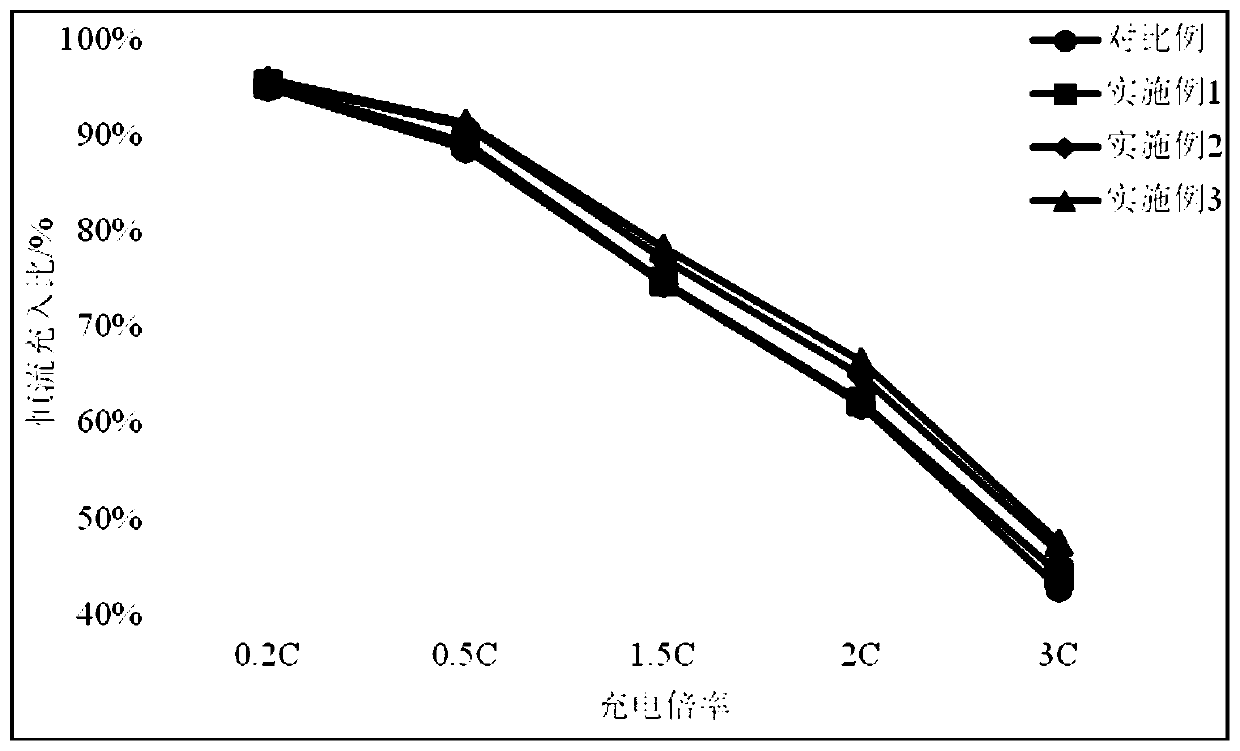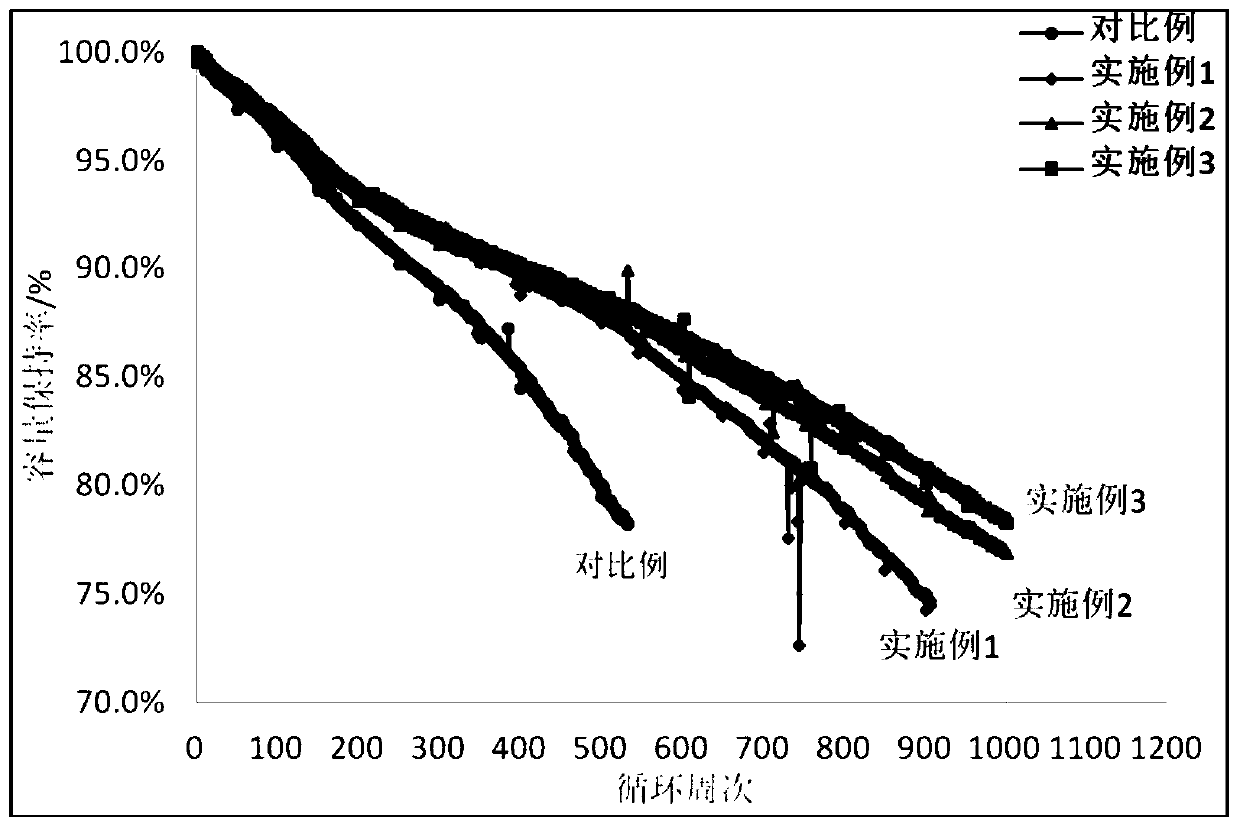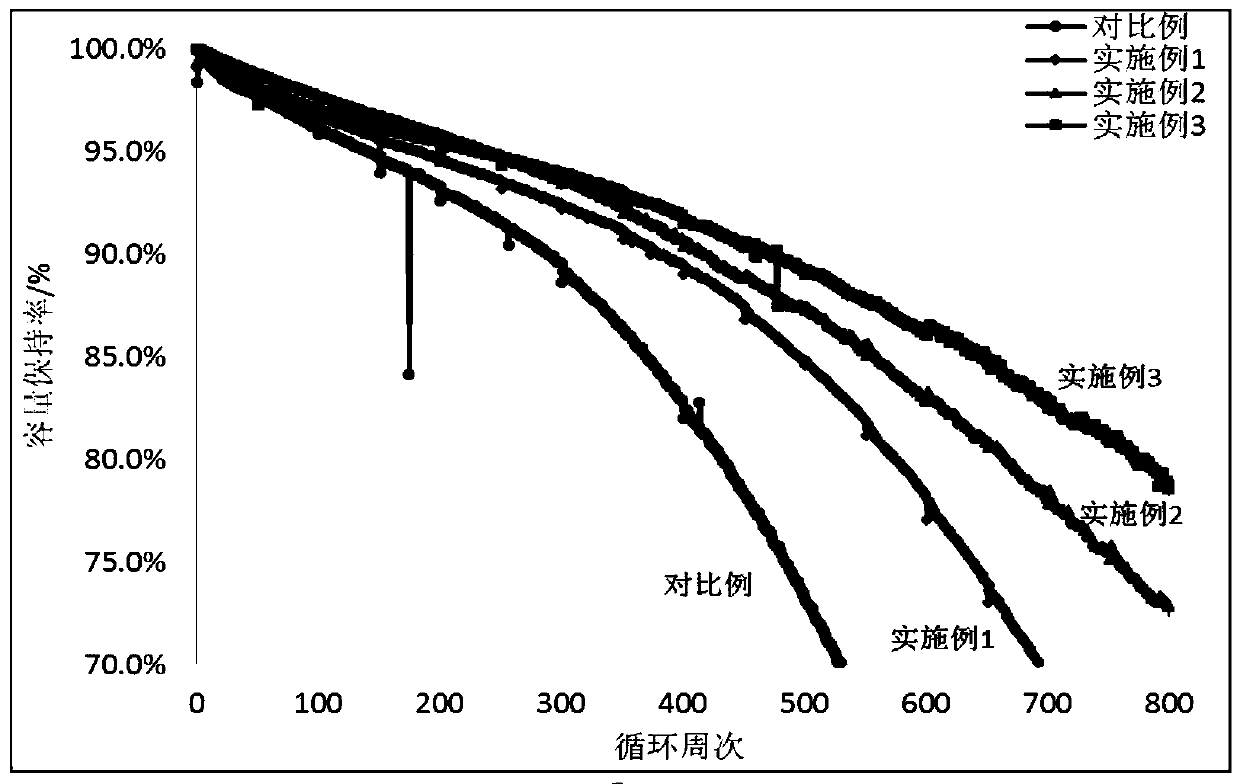Negative electrode active material and lithium ion battery with improved high-voltage quick charge cycle performance
A negative electrode active material, lithium ion battery technology, applied in active material electrodes, negative electrodes, secondary batteries, etc., can solve the problems of lithium ion battery fast charge cycle performance, shortened cycle life, and increased cycle expansion problems. Achieve the effect of improving fast charging cycle life and stability, increasing cycle times, and increasing rate performance
- Summary
- Abstract
- Description
- Claims
- Application Information
AI Technical Summary
Problems solved by technology
Method used
Image
Examples
preparation example Construction
[0061] The present invention also provides the preparation method of above-mentioned negative electrode active material, and the preparation method of described negative electrode active material comprises the following steps:
[0062] The negative electrode active material is prepared by mixing negative electrode graphite and small-diameter graphite.
[0063] The present invention also provides a lithium ion battery, the lithium ion battery includes a negative electrode sheet, the negative electrode sheet includes a negative electrode active material layer, and the negative electrode active material layer includes the above-mentioned negative electrode active material, a conductive agent and a binding agent .
[0064] In a preferred version of the present invention, the mass percentage of each component in the negative electrode active material layer is:
[0065] 70-99wt% negative electrode active material, 0.5-15wt% conductive agent, 0.5-15wt% binder.
[0066] Preferably, ...
preparation example 1
[0077] The average particle size (D 50 ) is 3-15 μm through spheroidized natural graphite, which is coarsely crushed, sieved and reshaped, and then heated to 2600 ° C. At this temperature, the reshaped natural graphite is graphitized for 10 hours, and then graphitized After the graphite particles are re-sieved, the average particle size (D 50 ) is graphite particles of 8-10 μm.
[0078] The average particle diameter (D 50 ) of graphite particles of 8-10 μm and 50 g of amorphous carbon precursor (phenolic resin) were uniformly mixed, and carbonized at 1000 ° C for 6 hours, and finally obtained a particle size distribution of D 10 = 4.77 μm, D 50 = 8.95 μm, D 90 = 17.5 μm small particle diameter graphite coated with amorphous carbon on the surface.
[0079] The tap density of the prepared small particle diameter graphite is 1.12g / cm 3 , the specific surface area is 2.16m 2 / g, the ultimate compaction density is 1.65g / cm 3 .
preparation example 2
[0081] The average particle size (D 50 ) is 5-30 μm spheroidized natural graphite, undergo a magnetic separation, and then carry out the first coarse crushing and sieving, then heat up to 2600 ° C, and carry out graphitization treatment at this temperature for 10 hours, and the graphite particles are Secondary sieving after pulverization, the prepared particle size distribution is D 10 = 8.39 μm, D 50 = 13.9 μm, D 90 = 23.5 μm negative electrode graphite.
[0082] The tap density of the prepared negative electrode graphite is 1.08g / cm 3 , the specific surface area is 1.15m 2 / g, the ultimate compaction density is 1.73g / cm 3 .
PUM
| Property | Measurement | Unit |
|---|---|---|
| The average particle size | aaaaa | aaaaa |
| The average particle size | aaaaa | aaaaa |
| Tap density | aaaaa | aaaaa |
Abstract
Description
Claims
Application Information
 Login to View More
Login to View More - R&D
- Intellectual Property
- Life Sciences
- Materials
- Tech Scout
- Unparalleled Data Quality
- Higher Quality Content
- 60% Fewer Hallucinations
Browse by: Latest US Patents, China's latest patents, Technical Efficacy Thesaurus, Application Domain, Technology Topic, Popular Technical Reports.
© 2025 PatSnap. All rights reserved.Legal|Privacy policy|Modern Slavery Act Transparency Statement|Sitemap|About US| Contact US: help@patsnap.com



